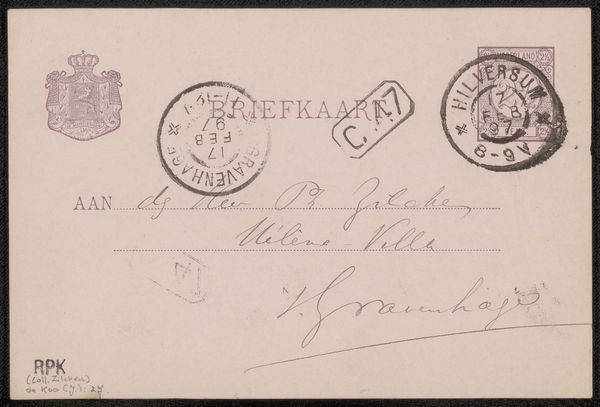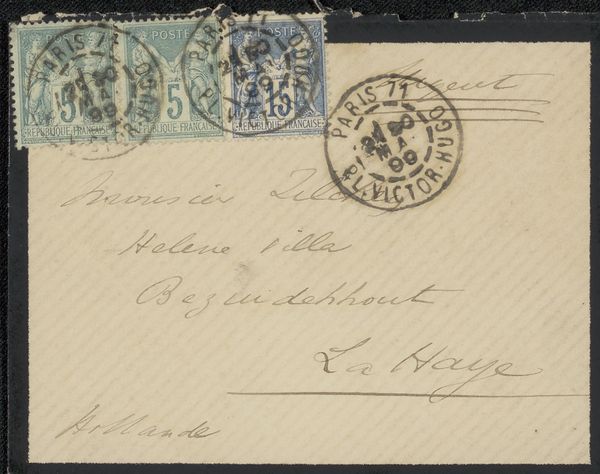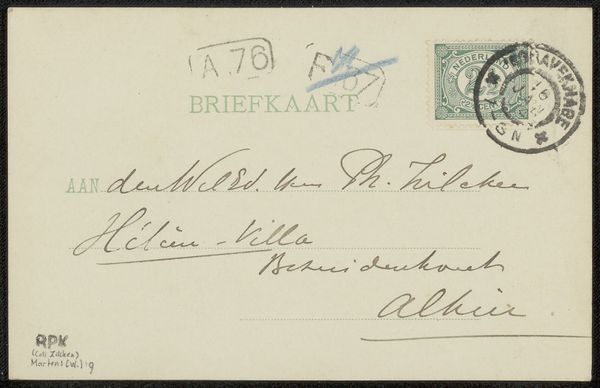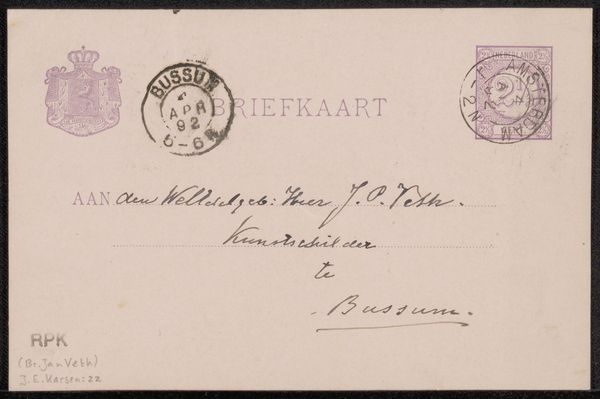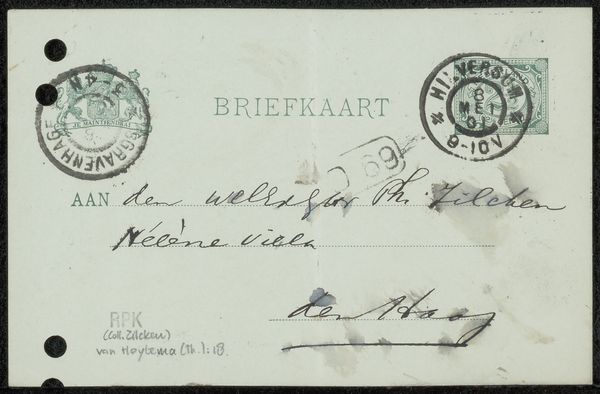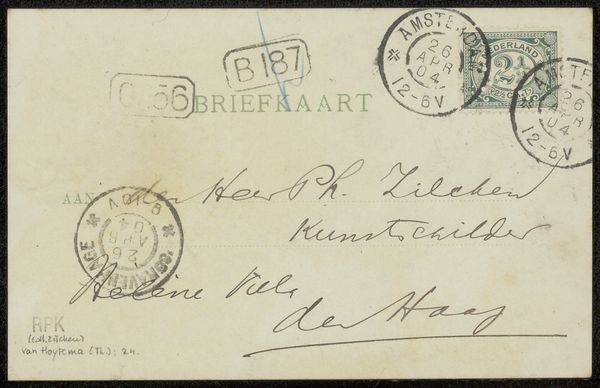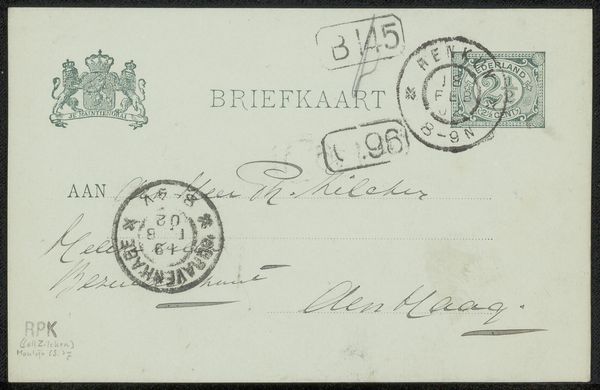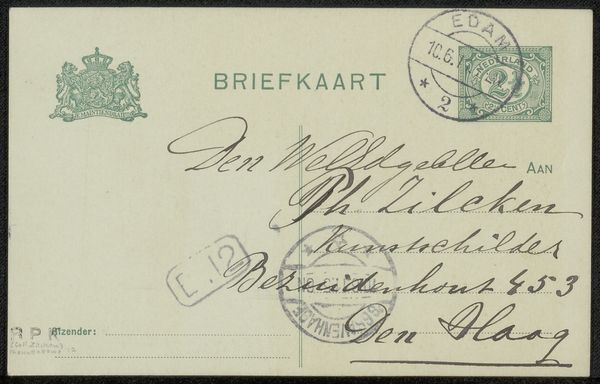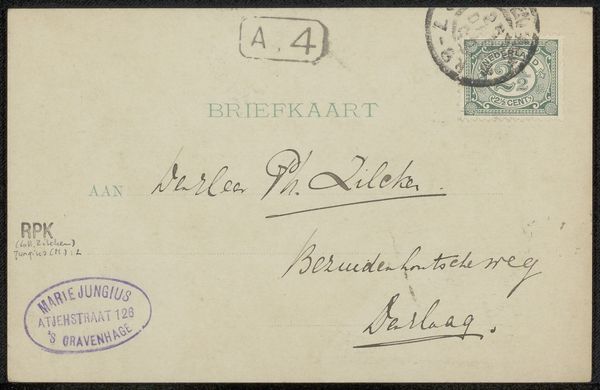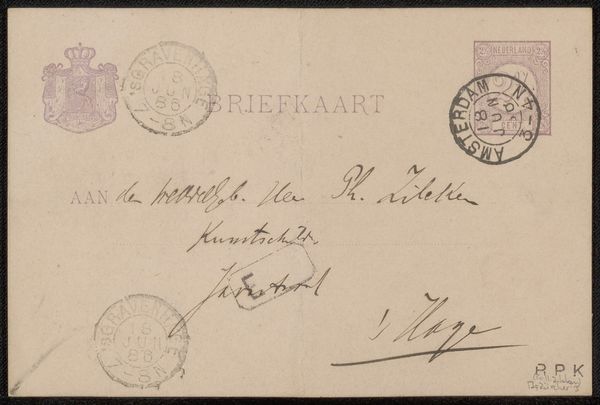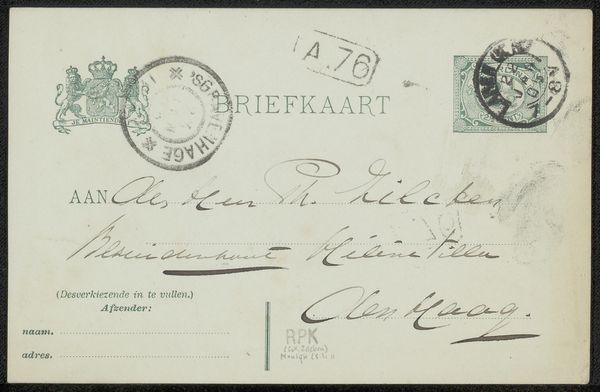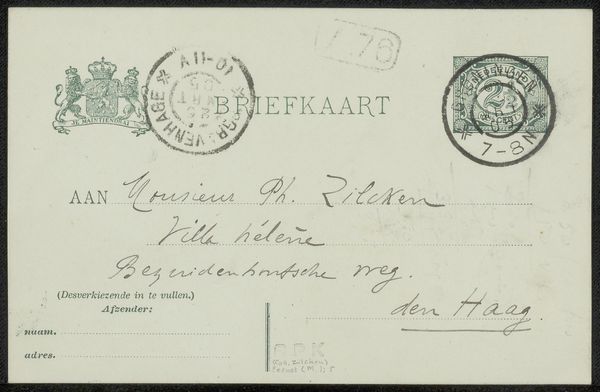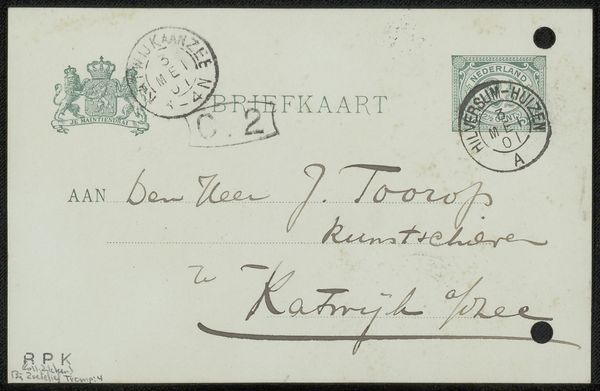
drawing, ink, pen
#
drawing
#
hand-lettering
#
old engraving style
#
hand drawn type
#
hand lettering
#
personal sketchbook
#
ink
#
hand-drawn typeface
#
ink drawing experimentation
#
pen work
#
sketchbook drawing
#
pen
#
sketchbook art
#
calligraphy
Copyright: Rijks Museum: Open Domain
Curator: Here we have Jan Zoetelief Tromp's "Briefkaart aan Willem Leuring," created before 1927, rendered in pen and ink. It seems quite small, a glimpse into an everyday exchange. Editor: Yes, the intimate scale gives it a personal, almost secretive quality. There's an undeniable nostalgia evoked by the faded ink and delicate script. But look beyond the surface, and it hints at something deeper. Curator: I’m drawn to the hand-lettering; the texture, and how the artist experimented with the density of the ink. The very act of Tromp's creation–the materiality of the paper, pen, and ink – speaks volumes about artistic practice at the time. We see the residue of his labor, quite literally. Editor: Absolutely. But consider, too, that postcards like these weren’t just simple mail. They served a socio-political function. The messages, even the seemingly mundane, played a part in the shaping of identities, in this case probably between Tromp and a Dr. Leuring in the Hague. Who was Willem Leuring? And what position did he occupy in society? How does that position of sender and recipient influence the message itself? Curator: Intriguing questions. And Tromp certainly wouldn't be mass-producing these. Each postcard, then, is almost a miniature, handcrafted artifact representing a unique exchange. The stamps, the postmarks, all material evidence of transit and handling—a unique process of moving through a system. Editor: The fact that he, an artist, took the time to design his address is interesting. Perhaps even making his status in Dutch society by creating this design. Plus, that this survives signals that it wasn’t simply disposable—it has meaning and speaks to its legacy within LGBTQ+ and art communities alike. Curator: Indeed, a survival through changing values and practices over a century is a statement on its own material presence. This fragile object tells a story not only about Tromp but about artistic production, about labor and skill, at a pivotal time. Editor: Agreed. It's a poignant reminder of the complex relationships embedded within seemingly simple everyday objects—connections between individuals, and connections between the art object and larger societal structures of identity and class.
Comments
No comments
Be the first to comment and join the conversation on the ultimate creative platform.
